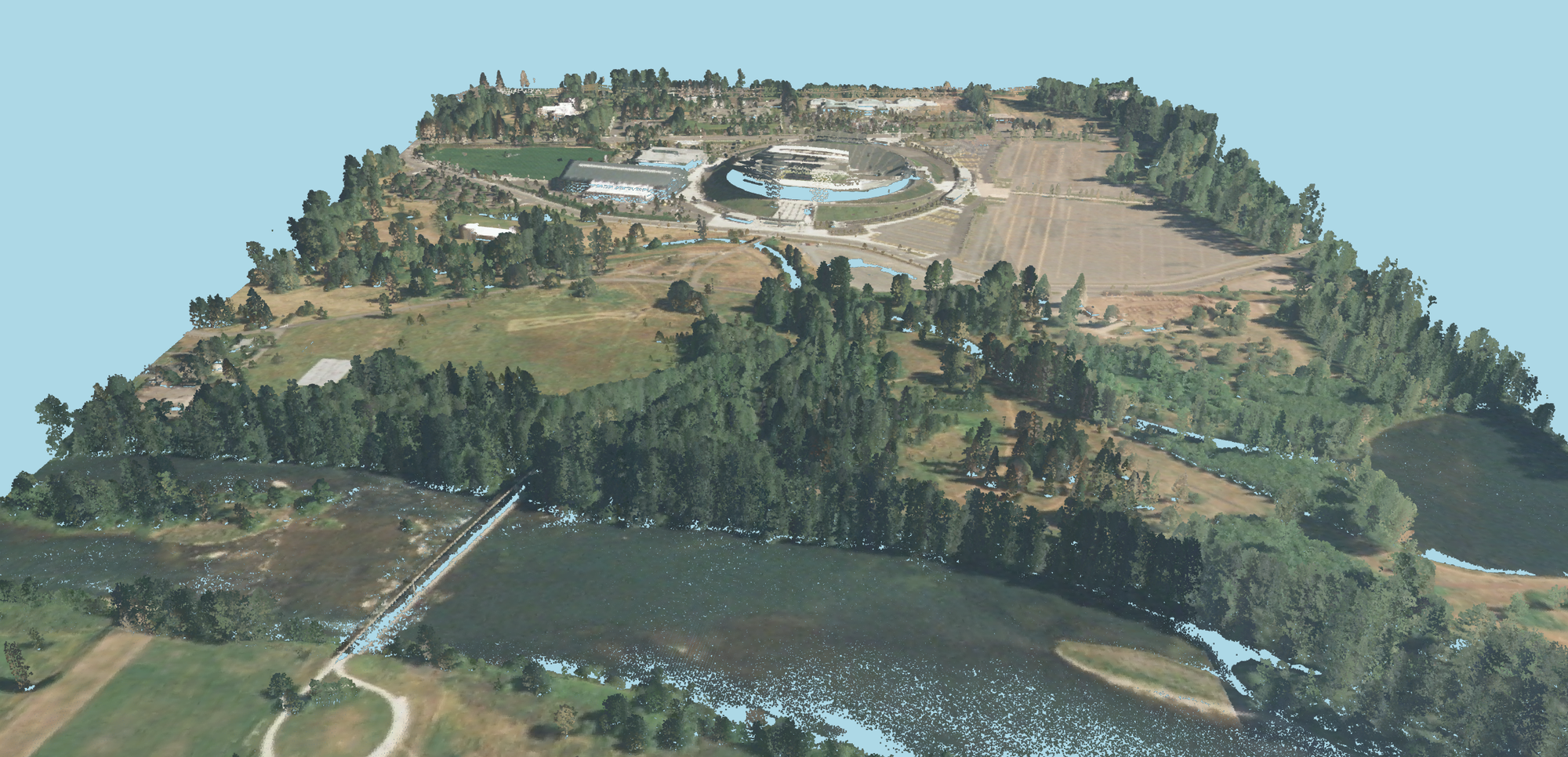Viewing a LAS Point Cloud with XKTLoaderPlugin
Introduction
In this mini-tutorial, we'll use xeokit's convert2xkt CLI tool to convert a point cloud model from LAS format into xeokit's compact XKT native model format, which we'll then view in the browser using a xeokit Viewer.
LAS is an open format for the interchange and archiving of lidar point cloud data.
The XKT format compresses models into a compact payload from which xeokit can load large numbers of objects over the Web in seconds, at full geometric precision.
For our point cloud file, we'll use an LAS point cloud capture of the Autzen Stadium in Oregon, provided by http://loaders.gl . When that's converted and loaded, it will look like the example below. This model contains 31 million points, and xeokit can usually load it over a good Internet connection in around ~15 seconds.

1. Install convert2xkt
Using git and npm, clone and install our xeokit-convert repository, which contains the convert2xkt tool that we'll use to convert our LAS into XKT.
Be sure to use the latest versions of both xeokit-convert and xeokit-sdk.
git clone https://github.com/xeokit/xeokit-convert.git
cd xeokit-convert
npm install
2. Convert LAS to XKT
Now convert the LAS into an XKT file:
node ./convert2xkt.js -s autzen.laz -o autzen.xkt
3. View the XKT
Let's view our model in the browser using xeokit. We'll create a Viewer attached to an HTML canvas, install an XKTLoaderPlugin, and use that to load our XKT model. Find the full example here.
import {Viewer,XKTLoaderPlugin} from "https://cdn.jsdelivr.net/npm/@xeokit/xeokit-sdk/dist/xeokit-sdk.es.min.js";
const viewer = new Viewer({
canvasId: "myCanvas"
});
viewer.scene.camera.eye = [635796.06, 855416.18, -3167.35];
viewer.scene.camera.look = [637290.78, 851209.90, 510.70];
viewer.scene.camera.up = [0.27, 0.68, 0.67];
viewer.scene.camera.project.far = 100000; // Make sure we don't clip the model
const xktLoader = new XKTLoaderPlugin(viewer);
const modelNode = xktLoader.load({
id: "myModel",
src: "autzen.xkt"
});
